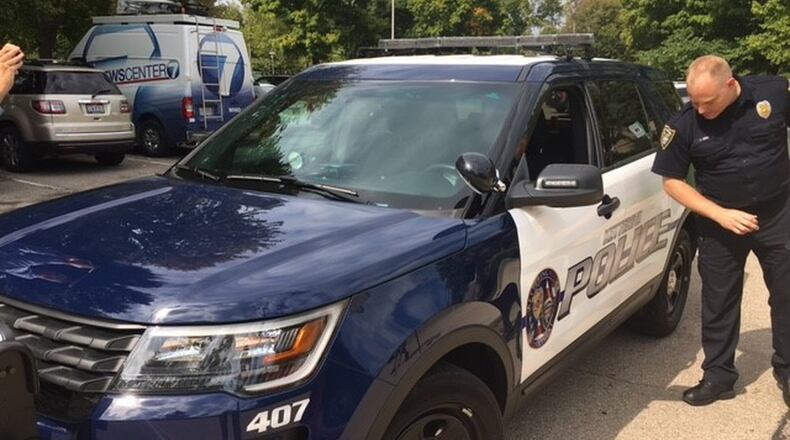“It’s an investment that we think is not only going to be good for protecting our officers, but it’s going to protect the community, Officer John Jung said. “It’s the right move for us, we’re all on board with it.”
That investment cost the department over $200,000.
For years, Kettering police had been apprehensive about adding in-dash cameras to their cruisers, citing the cost of the technology that was available to them at the time of testing, as a reason for waiting.
“There was a time where we did demo the in-cruiser cameras. The technology wasn’t to a point where it was justifiable in it’s cost. I think we wanted the technology to evolve a little bit.”
Jung credits Police Chief Chip Protsman, who joined the department in April, 2015, for adding the technology.
“We had a chief here for 30 years and then we had somebody new come in with some fresh ideas. That was kind of the first thing he did in his first 18 months,” Yung said.
There are three cameras the cruisers are equipped with: two front-facing cameras and one facing the rear seats. A video screen to the officer’s right shows the person in transport.
The cameras can be turned on manually by the officer, or automatically whenever the officer turns on their lights during a traffic stop.
“I think it’s positive (that they have dash cams). I’m happy they do,” said Emily McDade, a Kettering resident and Wright-Patterson Air Force Base employee. “It’s good to know if I’m ever pulled over by a police officer, everything will be documented.”
Jung said that body cameras could be something that the department will look into in the future, though a timetable has not been set.
“That may be something that happens down the road, but right now we have a lot that we’re taking on and I don’t think we’re going to be taking that on any time soon,” Jung said.
Officers do wear a sensitive microphone that records in tandem with their cruiser cameras, as a way to add another element of transparency when reviewing footage.
“In this climate, it’s safe for both parties if they have body cameras. Dash cams only capture so much footage. For the safety of both parties, I think body cameras would be beneficial,” McDade said.
About the Author
